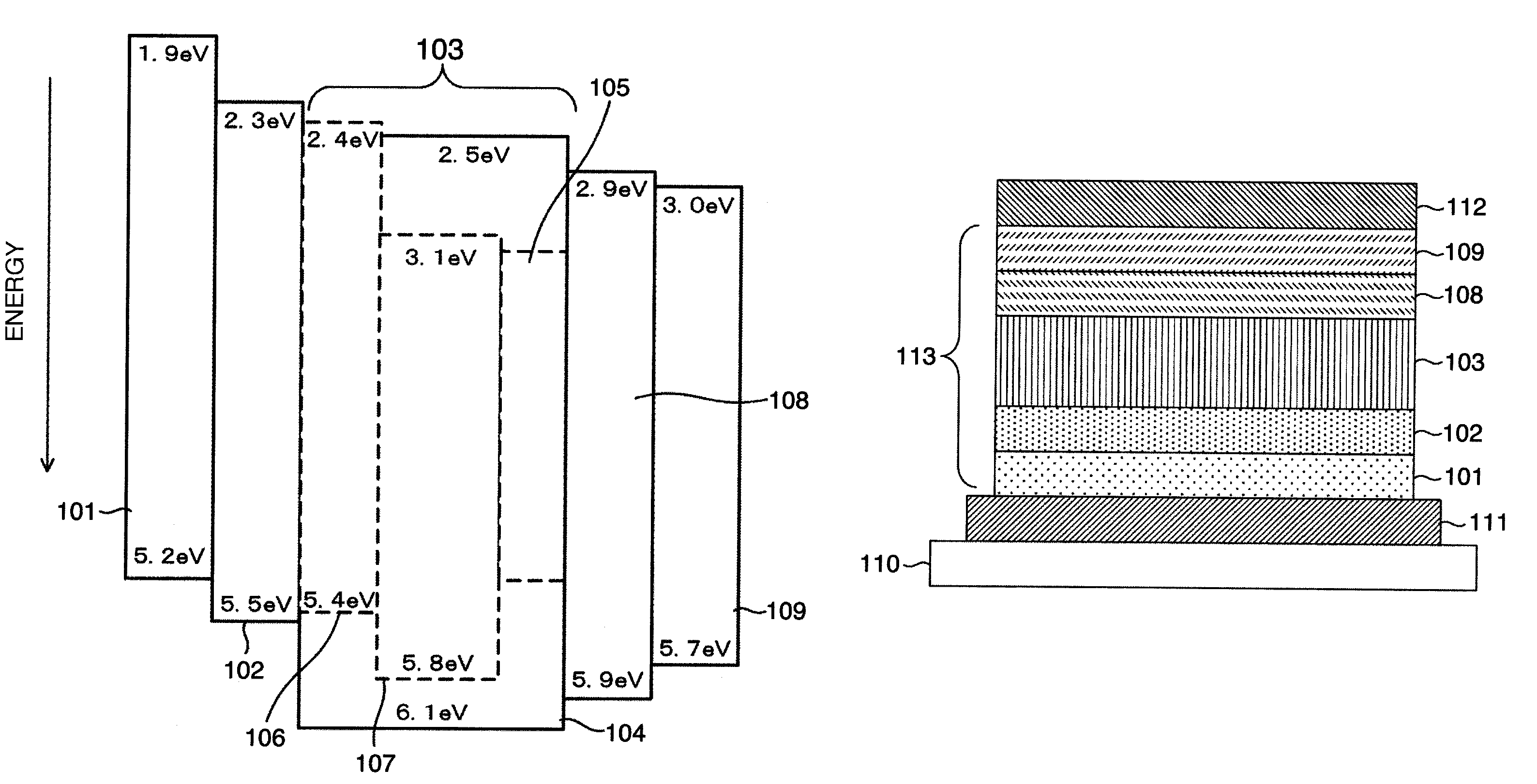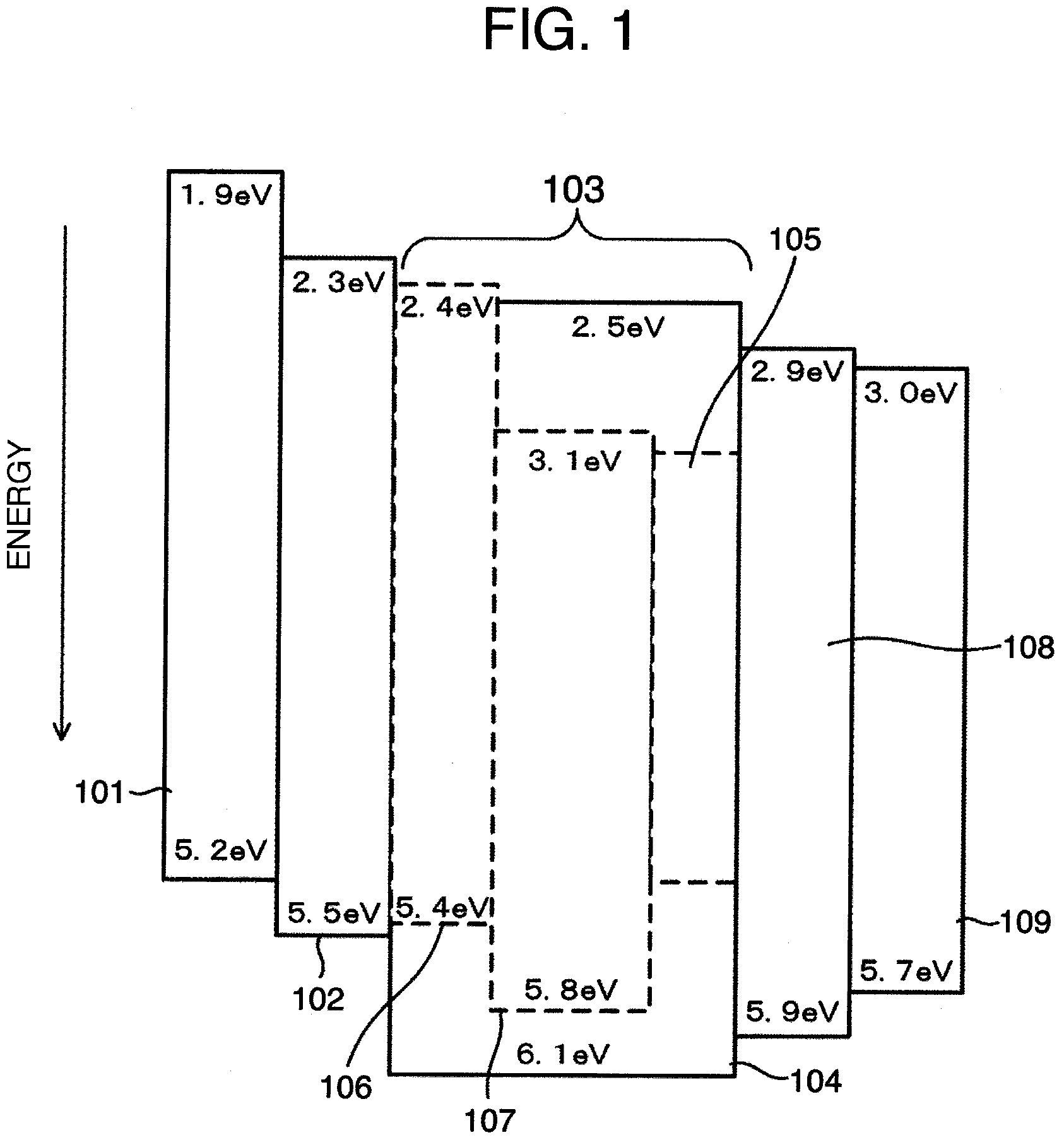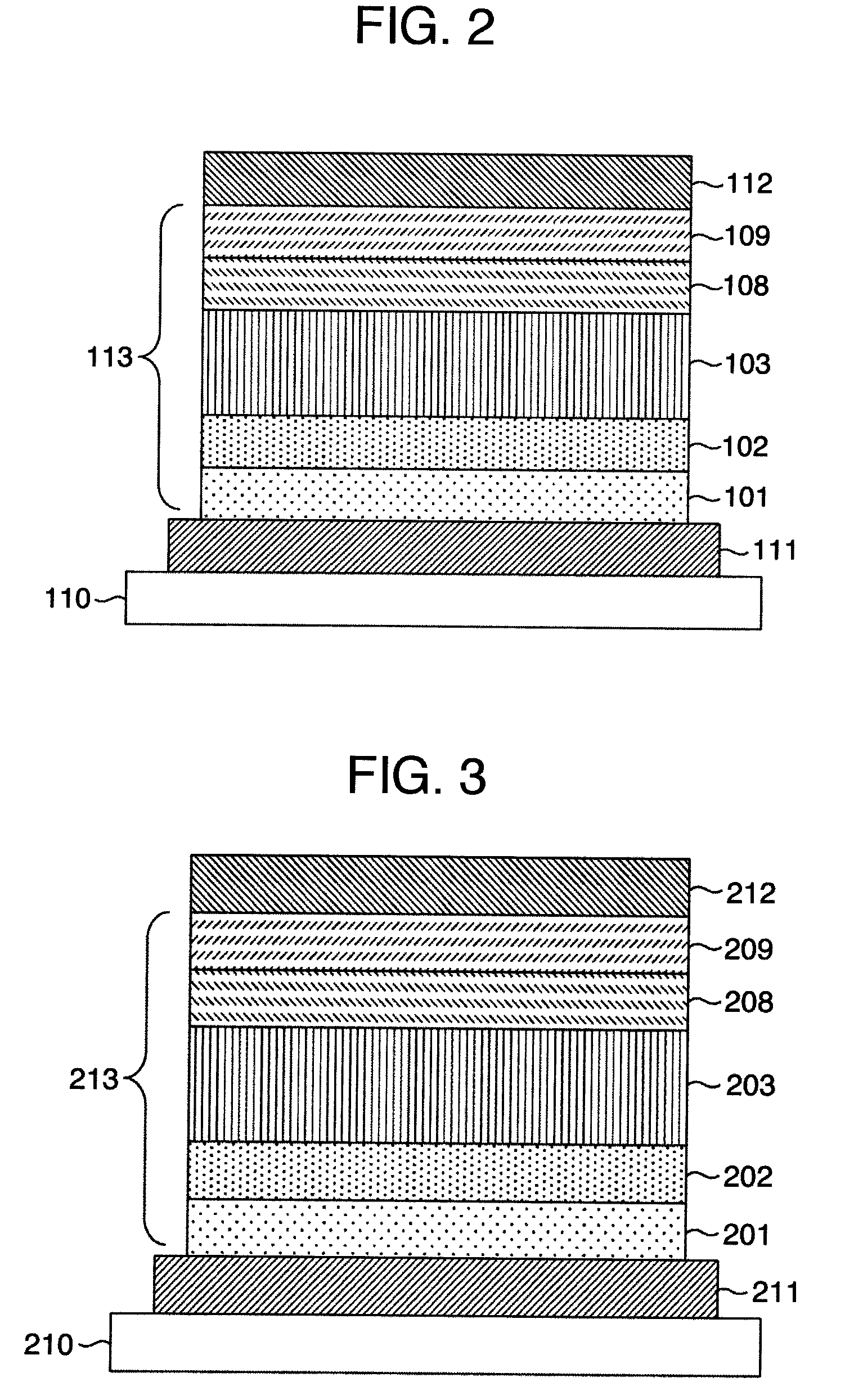Organic luminescent materials, coating solution using same for organic emitting layer, organic light emitting device using coating solution and light source device using organic light emitting device
a luminescent material and organic technology, applied in thermoelectric devices, energy-saving lighting, sustainable buildings, etc., can solve the problems of difficulty in controlling the concentration of dopant in the coating method of producing an organic light-emitting device, and difficulty in emitted white color, so as to achieve easy control of the concentration of dopant and easy emitted white light
- Summary
- Abstract
- Description
- Claims
- Application Information
AI Technical Summary
Benefits of technology
Problems solved by technology
Method used
Image
Examples
example 1
Synthesis of Exemplary Compound 1
[0055]First, the red-light-emitting dopant represented by the structural formula (1) was synthesized as one of the major constituents of the present invention to produce the white-light-emitting device of the present invention.
[0056]The compound represented by Formula 6 was synthesized as the essential intermediate for synthesizing the compounds represented by Formulae 2 and 3 by the following procedure.
[0057]
[0058]A 200 mL three-necked flask was charged with 0.718 g of phenylisoquinoline dissolved in 30 mL of ethoxyethanol and 0.418 g of iridium chloride dissolved in 10 mL of water, which were mixed with each other in the flask. The mixture was heated at 120° C. for 10 hours under reflux in a nitrogen atmosphere, then cooled to room temperature, and treated by evaporation. The resulting solid was washed with alcohol to produce the compound represented by Formula 6.
(Synthesis of Compound Represented by Formula 2)
[0059]The compound represented by Form...
example 2
[0068]Example 2 prepared the light-emitting layer in the same manner as in Example 1, except that mCP was used for the host material, bis(3,5-difluoro-2-(2-pyridyl)phenyl-(2-carboxypyridyl) iridium (III) was used for the blue-light-emitting dopant, the compound represented by Formula 2 was used for the red-light-emitting dopant, and the compound represented by Formula 5 or Ir(ppy)3 dissolved in THF was used for the green-light-emitting dopant.
[0069]
[0070]A voltage was applied to the organic white-light-emitting device with the green-light-emitting dopant of the compound represented by Formula 5 to confirm that each of the red-light-emitting dopant, green-light-emitting and blue-light-emitting dopants emitted light. For the device with the green-light-emitting dopant of Ir(ppy)3, the blue-light-emitting and green-light-emitting dopants emitted light of lower intensity than the red-light-emitting dopant.
example 3
[0071]FIG. 3 is a cross-sectional view of the organic white-light-emitting device prepared in Example 3. The device had an upper electrode 212 as the first electrode, lower electrode 211 as the second electrode and organic layer 213. The lower electrode 211 and upper electrode 212 may be used as the respective first and second electrodes. The device illustrated in FIG. 3 comprised a substrate 210 which supported the lower electrode 211, organic layer 213 and upper electrode 212 in this order from the substrate. It was of bottom emission type in which light emitted by a light-emitting layer 203 was taken out from the lower electrode 211 side. The lower electrode 211 was the transparent electrode working as the anode and upper electrode 212 was the repeller working as the cathode. The organic layer 213 was composed of a hole injection layer 210, hole transport layer 202, light-emitting layer 203, electron transport layer 208 and electron injection layer 209. The organic layer 213 may ...
PUM
 Login to View More
Login to View More Abstract
Description
Claims
Application Information
 Login to View More
Login to View More - R&D
- Intellectual Property
- Life Sciences
- Materials
- Tech Scout
- Unparalleled Data Quality
- Higher Quality Content
- 60% Fewer Hallucinations
Browse by: Latest US Patents, China's latest patents, Technical Efficacy Thesaurus, Application Domain, Technology Topic, Popular Technical Reports.
© 2025 PatSnap. All rights reserved.Legal|Privacy policy|Modern Slavery Act Transparency Statement|Sitemap|About US| Contact US: help@patsnap.com



